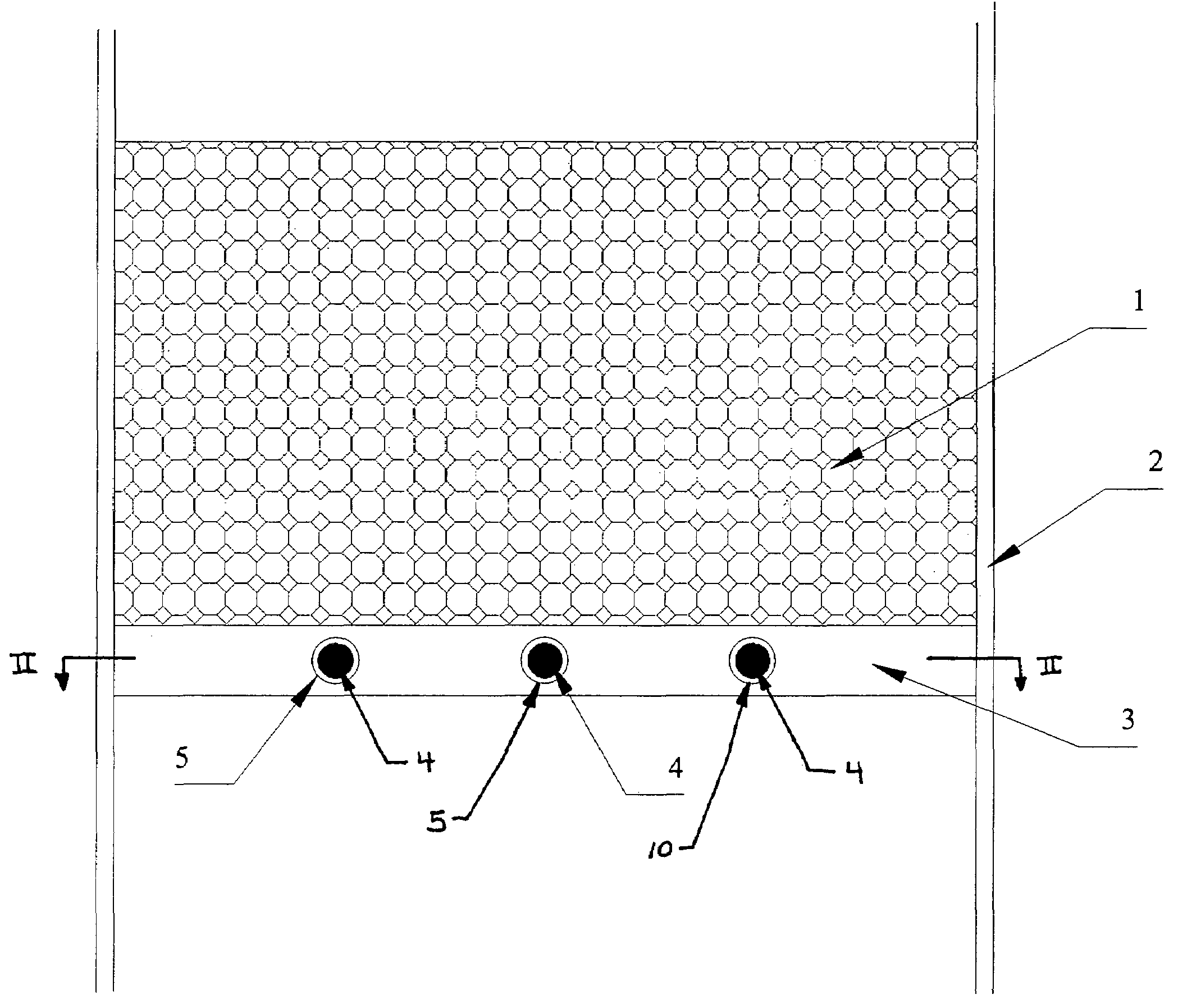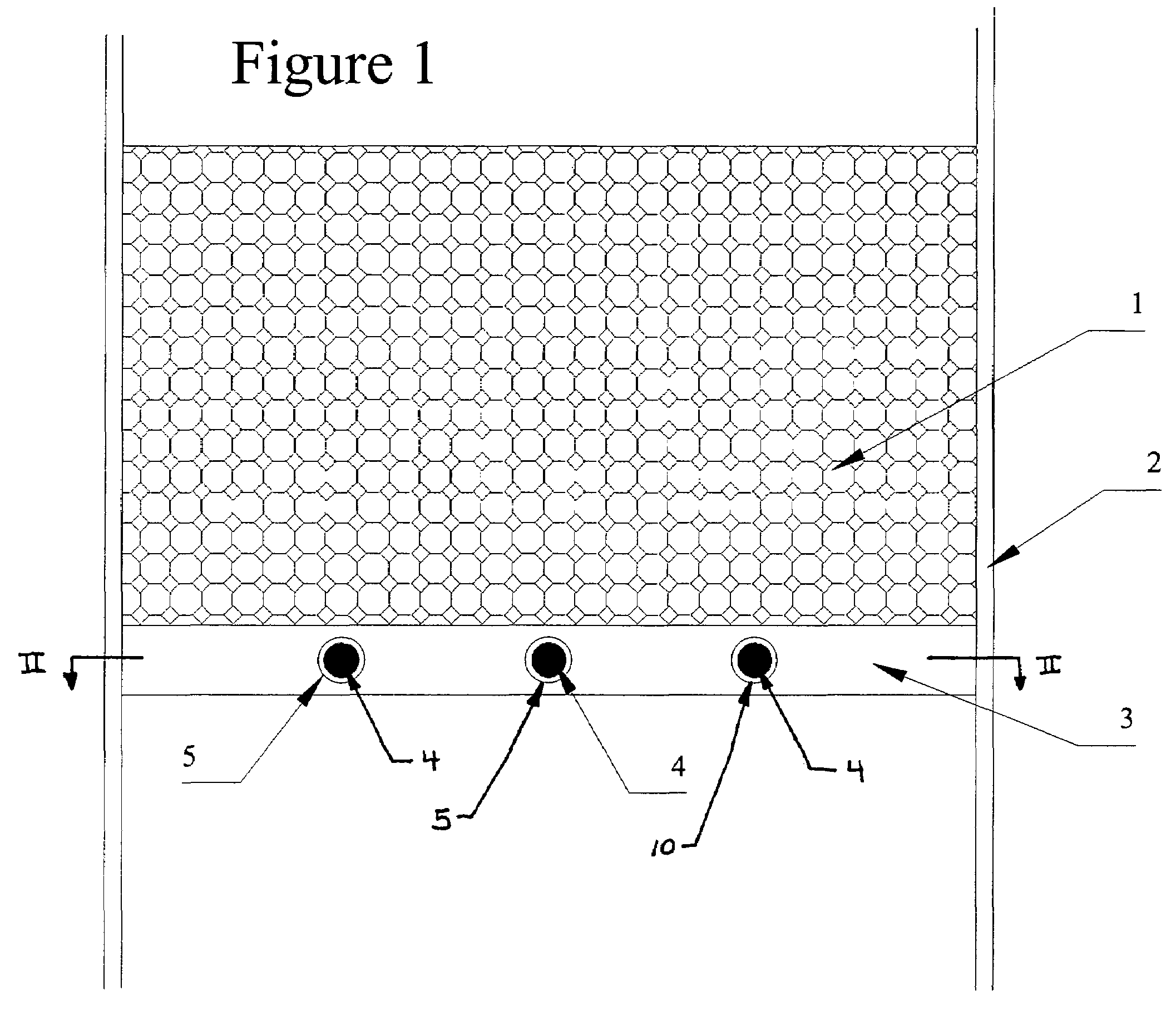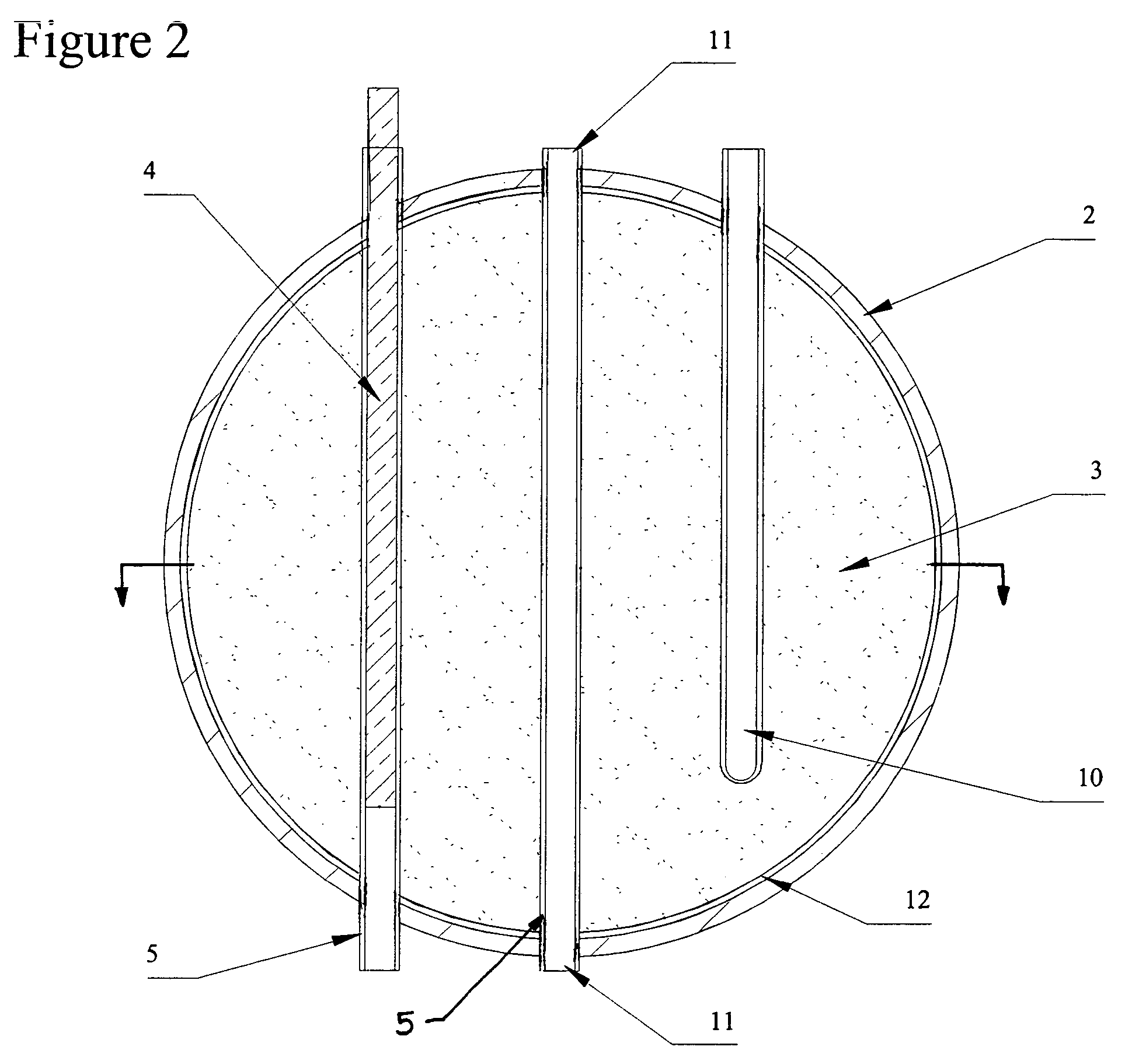Electrically heated catalyst support plate and method for starting up water gas shift reactors
a technology of catalyst support plate and catalyst, which is applied in the direction of liquid-gas reaction of thin-film type, gas-gas reaction process, furnace, etc., can solve the problems of large thermal inertia, inability to achieve operating temperature, and inability to achieve liquid formation
- Summary
- Abstract
- Description
- Claims
- Application Information
AI Technical Summary
Benefits of technology
Problems solved by technology
Method used
Image
Examples
Embodiment Construction
[0018]The advantages and embodiments of the present invention will be better understood from the following detailed description.
[0019]FIG. 1 shows a packed bed of catalyst particles 1, contained within a reactor vessel 2. The catalyst particles are depicted as spherical, but other shapes are known in the art. The catalyst particles may be varying degrees of porosity, may be of homogeneous or heterogeneous composition, and may be formed from metals or non-metals. In short, the physical form of the catalyst particles does not limit the practice of the present invention in any way. In fact, the catalyst particles may be replaced by a catalyzed monolithic body if desired, and the function of the present invention would not be affected in any way.
[0020]The catalyst particles are supported by a support plate 3. This support plate is in intimate mechanical contact with a number of heater channels 5, which can each accommodate one or more electrical heating elements 4. Although the heating ...
PUM
| Property | Measurement | Unit |
|---|---|---|
| shape | aaaaa | aaaaa |
| permeable | aaaaa | aaaaa |
| operating temperature | aaaaa | aaaaa |
Abstract
Description
Claims
Application Information
 Login to View More
Login to View More - R&D
- Intellectual Property
- Life Sciences
- Materials
- Tech Scout
- Unparalleled Data Quality
- Higher Quality Content
- 60% Fewer Hallucinations
Browse by: Latest US Patents, China's latest patents, Technical Efficacy Thesaurus, Application Domain, Technology Topic, Popular Technical Reports.
© 2025 PatSnap. All rights reserved.Legal|Privacy policy|Modern Slavery Act Transparency Statement|Sitemap|About US| Contact US: help@patsnap.com



